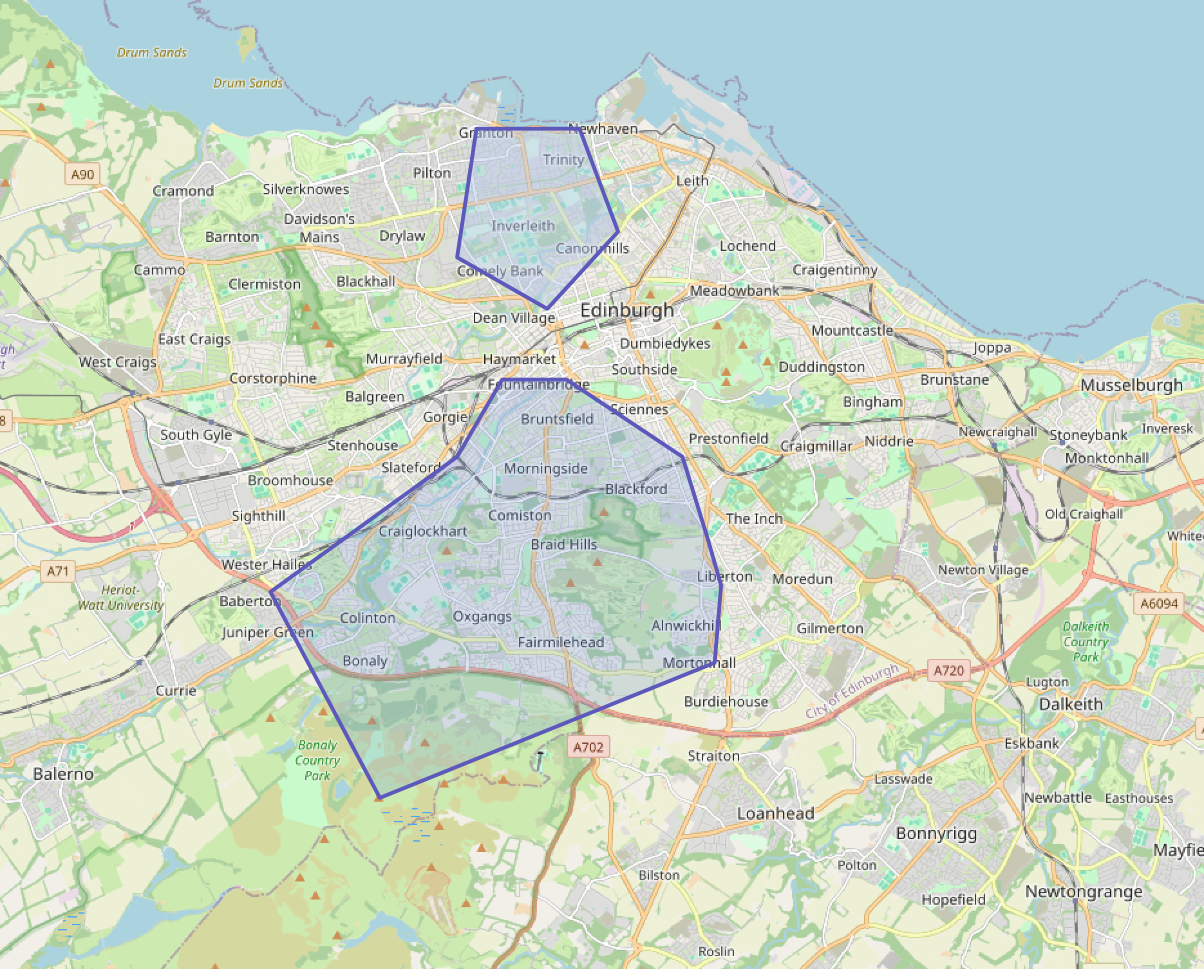Fairlie History
Family history is currently in draft.
See also the About Page for some general information.
An overview of the Fairlies of Braid
The Fairlie family of Braid had a long and influential history in Edinburgh, with early records dating back to William de Fairlie, a burgess and custumar of Edinburgh by 1329. William de Fairlie played a role in Edinburgh's military and political landscape, notably participating in the retaking of Edinburgh Castle in 1337 alongside William Douglas. He was rewarded by the king for his service and is considered the patriarch of the Fairlie line associated with Braid.
His son, William de Fairlie of Braid, is believed to have acquired the lands of Braid, Bavelaw, and Comiston sometime between 1361 and 1373. These lands remained in the family's possession for several generations, with each subsequent head of the family playing a role in Edinburgh’s civic life. John de Fairlie, for instance, married Elene, the natural daughter of Sir Henry Douglas of Lugton, further connecting the Fairlie family to other notable Scottish families.

Over the centuries, the Fairlies continued to serve in various capacities, both militarily and in civic roles. In the 1630's, the lands of Braid were sold by Sir Robert Fairlie to William Dick of Braid. This would have marked an end to the Fairlie family's direct ownership of the estate, however in 1652 William Fairlie was granted a charter to the lands and barony once again under the Great Seal. It is unsettling to note that the Fairlie's have no more recorded transactions about their lands since this time, though the Exchequer is recorded as selling the land and title to John Brown of Gorgie Mill.
The destiny of the Fairlie family’s holdings following the Exchequer's dispensation of Braid in 1655 remains uncertain, as records regarding their subsequent property ownership are either lost or fragmented. After this, the Fairlie family seems to fade from prominence in Edinburgh's history.
This period, the 17th century, was marked by major upheavals in Scotland, particularly during the English Civil Wars and the subsequent Cromwellian invasion of Scotland. These events had a profound impact on many landholding families, including the Fairlies. The Cromwellian conquest of Scotland (1650-1651), following the Royalist defeat, led to widespread forfeiture of estates among the Scottish gentry who supported King Charles II, with Oliver Cromwell imposing heavy fines and confiscating lands.
The Fairlies’ potential losses during this period may have mirrored the experiences of other Royalist families, whose estates were seized or redistributed to Cromwell's supporters. With records of their lands diminishing in this era, it’s possible that any remaining Fairlie properties were confiscated or sold during the Commonwealth period (1650-1660). However, without specific surviving documents, the exact fate of their holdings during and after the Cromwellian rule remains speculative.
This aligns with a broader historical pattern where many loyalist Scottish families, particularly those with ties to the Stuart monarchy, faced significant property losses under Cromwell's regime. This period of instability likely contributed to the Fairlies’ decline as prominent landowners in Edinburgh and the surrounding areas.
Notable members of the family included Robert Fairlie of Braid, who served during the 16th century, and Archibald Fairlie, who had strong ties to the Campbell and Douglas families through marriage. The Fairlies also had connections to John Knox, the Scottish Reformer, as one of Robert Fairlie’s descendants, Alexander Fairlie, married Knox's daughter, Martha.
Throughout their history, the Fairlies were not only influential in Edinburgh but also in other regions of Scotland, marrying into families such as the Prestons, Douglases, and Craigs.
Following the decline of their estates, the Fairlies seem to have faded from view in Edinburgh's history. They took on various occupations popular in the region, working over the generations as tailors, smiths, ploughmen, shale miners, and pipe fitters.
Sources & Citations
- Red Book of Scotland, vol VI., pp. 376-383
- ScotClans: Fairlie Clan History (https://www.scotclans.com/blogs/clans-de/fairlie-clan-history)